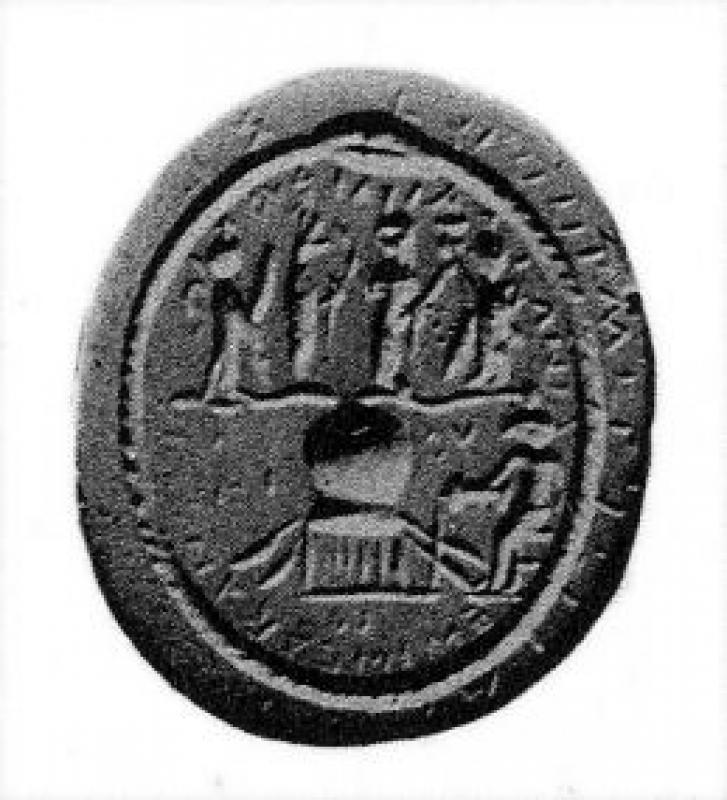 Bonner, SMA – PDF, 87.
Bonner, SMA – PDF, 87.
class an ass-headed deity stands on the symbol, and is evidently meant for Set-Typhon.36
There are other examples also which represent a deity as touching the key of the uterus. A good specimen in the University collection shows four deities above — an unidentified goddess, the Anubis mummy, and two winged goddesses in the usual attitude of Isis and Nephthys in attendance upon Osiris. Below, at the right, is seated a ram-headed figure, resting his right hand on the large knobbed handle of the key.37 A similar position is occupied, on one of the Southesk stones, by a deity who apparently has the head of an ass, that is, Set; but this being touches the base of the vessel or one of the bars or wards of the key. Something that looks like the handle of the key is to be seen on the opposite side of the design, but the illustration does not make all details clear.38 On one of the Athenian amulets published by Delatte, a ram-headed (or hawk-headed) figure, human, I think, not simian, as Delatte says, kneels at the lower right, on the same side with the handle of the key, but seems to be touching, not the handle, but the stem of the key from which the wards project.39 Mr. Seyrig has in his collection an unusual design which represents an enthroned deity, ram-headed and crowned with a sun disk, holding out on his right hand the uterine symbol with the key distinctly shown.40 Over it sits a tiny figure of Harpocrates. Fronting the enthroned god stands a female figure, hands raised with palms outward in a gesture of adoration or benediction.
The last five specimens all seem to be directed towards control of the organ, but the purpose for which that control is to be exercised is not made clear. It might be to check any morbid condition, to prevent conception, or to favor it and facilitate parturition. Evidence that all those ends might be sought by magical means can be gathered from the papyri.
At this point attention may be called to a very curious stone which, in my opinion, belongs here, although a different view has been expressed by the scholar who first made it known. It is illustrated by satisfactory line drawings in Mr. Seyrig's “Invidiae Medici.”41 The reverse, which it is convenient to examine first, presents a combination of elements that is apparently unique. The lower half of the field is occupied by what seems to be an altar of very unusual form. Its main part is a truncated pyramid, and upon that rests a crescent-shaped structure which may, perhaps, represent schematically the upper surface of the altar with high horns at the corners. If, as is likely, the stone is of Syrian manufacture, that may account for this feature of the design. Nothing like it is to be found on the numerous specimens, kindred in purpose, that follow the Egyptian pattern heretofore discussed. Over this altar, if such it is, but not resting upon it, is a vessel of oval outline, slightly
36 Barry, Ann. du serv., 7, Pl. 1, 3 (following p. 288); Southesk N 43, Pl. 14, formerly in the Montigny collection, and surely identical with No. 9 on Koehler's plate.
38 N 44, Pl. 14.
39 Delatte, op. cit., p. 75, No. 33 (Pl. 3, 9 — lowest row, second from the left).
40 D. 143. The head might also be taken for that of a hawk; it is hard to be sure of details in such minute work.
41 Berytus, 1, 3–4; D. 144 (from a photograph).
Cf. Dasen 2019, comm. ad Bonner, SMA 79–94


